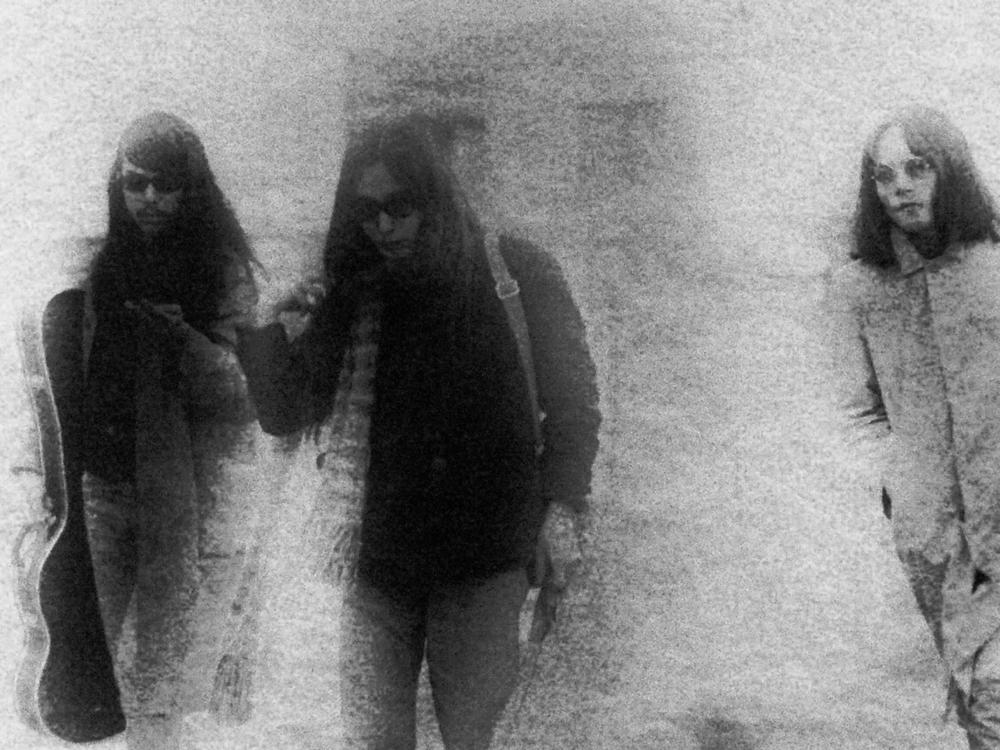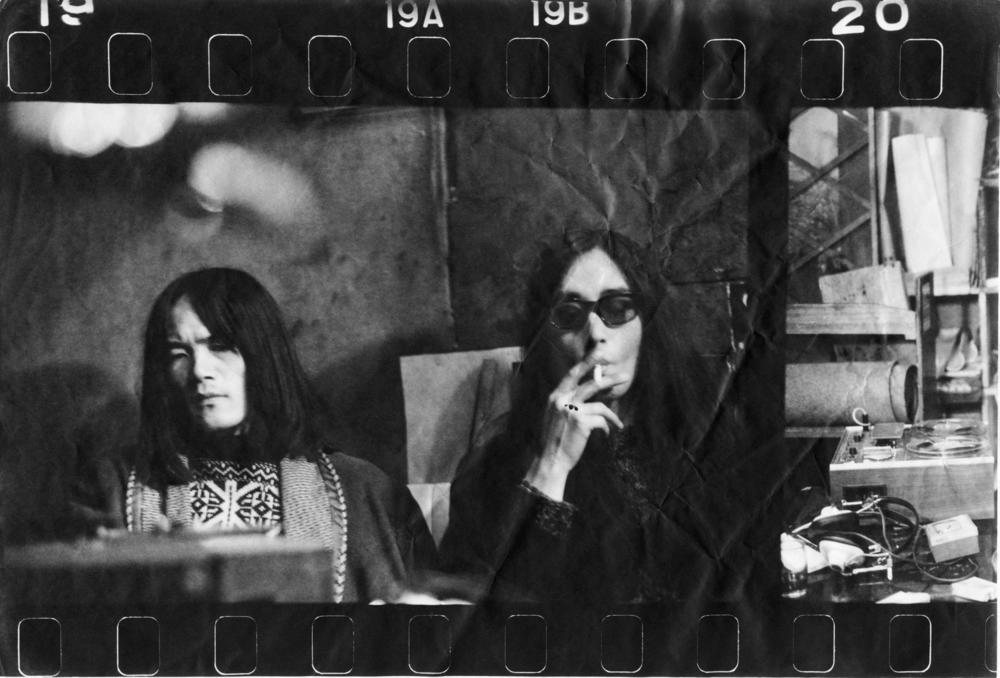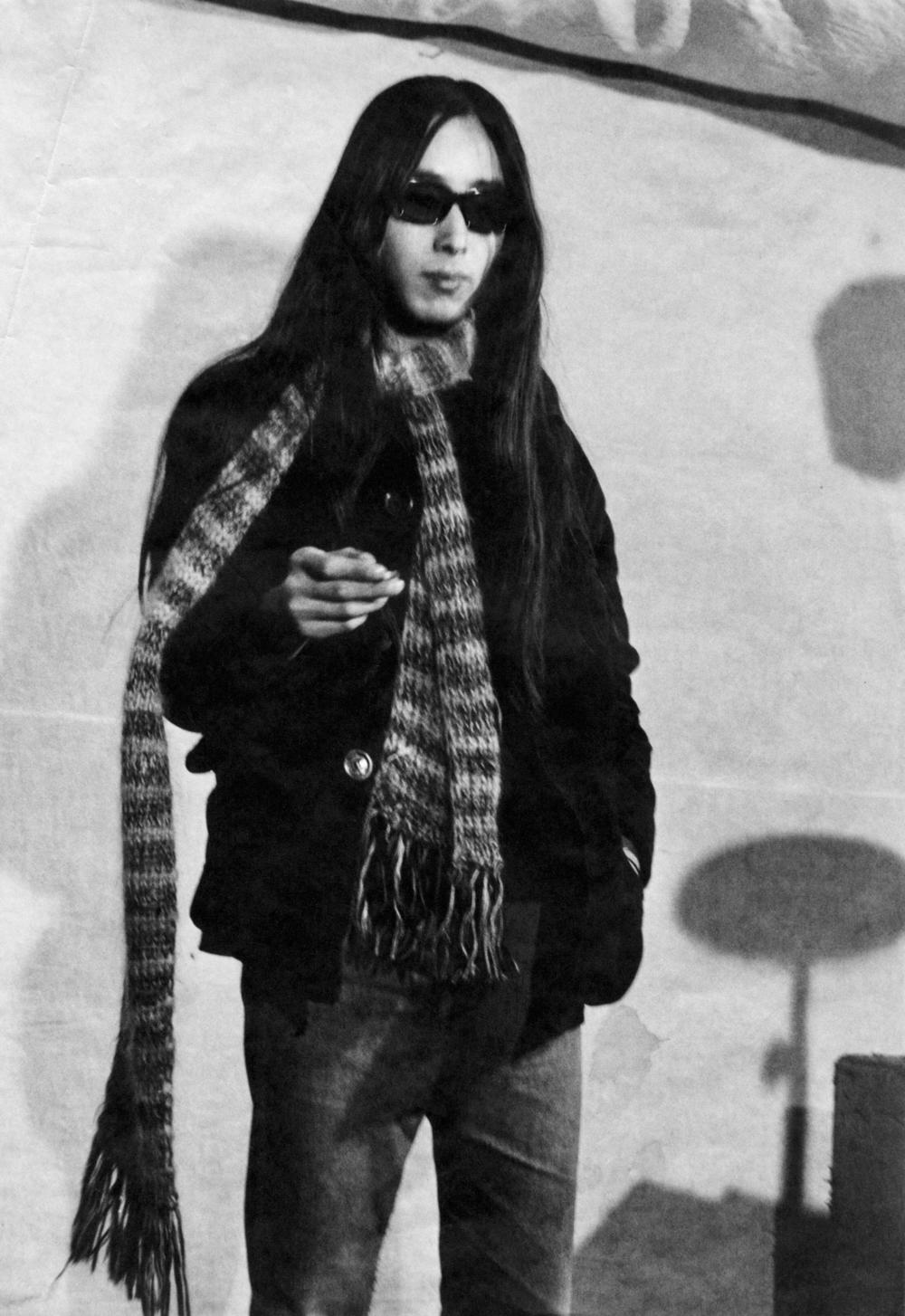Section Branding
Header Content
The fuzz, feedback and folklore of a mythic Japanese psych-rock band
Primary Content
With just fuzz, wah-wah, tape delay and amplifiers of incredible wattage, the sounds Takashi Mizutani wrung from his electric guitar were seismic beyond belief. Never playing five notes when one held to oblivion would do, his guitar mastery was in the feel, texture and pure, earth-shaking volume and vibration of his instrument. Listening to live recordings of Mizutani's band Les Rallizes Dénudés is a frequently unnerving experience, as there exists an implicit threat that any moment could be overtaken by excruciating, ear-piercing feedback. This was no mistake, but by design: "Our band's direction was decided the instant my electric guitar fed back," Mizutani told Music Magazine writer Manabu Yuasa via fax in 1991, one of the only known communiqués from the notoriously interview-allergic recluse.
Never completing a studio album and failing to ever register his compositions in any legal way, Mizutani's sonic art has long lived in the shadowy domain of unofficial live bootlegs, which generated rampant piracy, myth and rumor about his life and work. After delayed news of his death was announced in Oct. 2021 via Les Rallizes Dénudés' first official website — he died in 2019 — managing entity The Last One Musique promised to finally offer the truth that had been obscured by years of hearsay and legend. Now with a 50-year-old live recording titled The OZ Tapes, Mizutani's fervent fanbase is at last able to legally acquire the music of this totem of psychedelic rock.
The strange tale of Les Rallizes Dénudés begins in 1967 at Doshisha University in Kyoto. It was on Doshisha's politically and culturally progressive campus where Takashi Mizutani befriended the radical theater troupe Gendai Gekijo and, according to lore about the origin of the band's name, adopted their slang "valise dénudé" — its direct translation meaning "empty suitcase," roughly equivalent to "airhead." Incorporating a play on the Japanese slang "rari," meaning "under the influence" (which explains a popular alternative translation of the band's name), he had a name that conveyed the empty vessel his body would have to become to channel titanic currents of audio assailment.
Mizutani's compositions center on hypnotic repetition and rugged simplicity in the rhythm section, which allows ample space for his passionate, echo-laden vocals and maelstrom of free-wailing guitar to fly high atop. A voracious appetite for extreme sounds on the edges of American rock and jazz guided these unique auditory manifestations: the proto-punk of The Stooges, The Seeds and The Velvet Underground; American free-jazz pioneers John Coltrane and Albert Ayler; releases on the boundary-destroying avant-garde label ESP-Disk'; the time-bending, mind-expanding jams of 1960s Haight-Ashbury groups. Each skipped a flat stone over the surface of the Pacific, generating fractal rings that collided and combined in ways only Mizutani could envision and embody.
In particular, the Fillmore West scene revolving around the Grateful Dead's axis was of unique interest to both Rallizes and the directors of OZ, the café and performance space that acted as a short-lived headquarters for countercultural art in Tokyo's Kichijoji neighborhood. When the venue approached its inevitable end, the OZ Last Days festival — from which The OZ Tapes' performances are drawn — was patterned directly after the Fillmore's closing fest. Even the original private-press OZ Days Live compilation mirrored the commemorative Fillmore: Last Days vinyl set. But with Les Rallizes Dénudés allowed only a single side of wax to contain their sprawling jams, the original release pales in comparison to the transcendent impact of The OZ Tapes. Thanks to LRD bassist and producer Makoto Kubota's sensitive remastering of the original tape reels, which remained miraculously undecayed under the care of OZ manager Minoru Tezuka, we are finally gifted the opportunity to be front-and-center to the band's incandescent performance in a glorious high-fidelity stereo field.
Kubota — a lifelong musician, producer and collaborator in many Japanese music projects of note over the past 50 years — connects the late Mizutani to Temporal Drift. "Our relationship with The Last One Musique begins with Makoto Kubota," writes Temporal Drift co-founder Yosuke Kitazawa. After working with label partner Patrick McCarthy on Light In The Attic's reissue for Sanchiko Kanenobu's Misora, a connection was made with Kanenobu's personal friend Kubota. Kitazawa and McCarthy were both longtime fans of the band, and in the midst of launching their new label, leapt at the opportunity to bring official Les Rallizes Dénudés records into the world.
It's appropriate that The Last One Musique and Temporal Drift have issued a single, unedited live performance as the first above-ground Rallizes release in their campaign. A studio album by Les Rallizes Dénudés never materialized in Mizutani's lifetime, which has often been attributed to his crippling perfectionism, but OZ's unabridged versions of "The Last One" reveal that a studio could hardly hope to contain or capture the colossal sonics he favored. Les Rallizes Dénudés were after a visceral — sometimes violent — impact, borne from unimaginable loudness. Performing with mirror balls, stupefying light shows, fog machines and strobes, the band's live sets required no drug inducement to naturally achieve the psychedelic state.
This precedence of live performance over studio recordings links LRD once again to the Grateful Dead, and the vibrant "taper" scene that cropped up amongst its fanbase to circulate the sound across time and space. A crucial distinction must be made, however: while the Dead graciously welcomed tapers at their shows and even helped facilitate tape-trading networks, Mizutani, according to Kubota, "hated the idea." But with Rallizes records completely nonexistent in Japanese record shops, many of those lucky enough to catch one of their infrequent concerts began to bring various audio recorders with them, capturing raw and often unbelievably overdriven tapes to take home and listen to religiously. Some dubbed and passed these illicit recordings on to fellow fans, as piracy was the only means for zealots to turn on neophytes. And so an underground community flowered from the dank soil beneath Mizutani's black-booted feet, a legion bound together as adoring co-conspirators.
Thus, word about this superlatively loud music spread in hushed tones of reverence, each cassette, CD-R and white-label vinyl that survived its clandestine birth garnering a whole new clan of converts, eventually materializing as MP3 uploads on music blogs in the 2000s. "There are many times when the consumer has no idea that what they're buying is a bootleg or that the artist isn't really getting any royalties from the sale," says McCarthy. "That was certainly the case for many fans of Les Rallizes, where the rumors were that someone in the band or even Mizutani was behind the releases. We know now that this was not the case."
As each new pressing sold out quickly with zero publicity, the cult of Les Rallizes Dénudés grew, and so did the number of bootleg record labels looking to cash in without having to share a cent with the musicians themselves. Whether driven by sheer economics or a more idealistic drive to spread some of the most extreme music in the psychedelic rock canon, the result for Mizutani was the same: an insatiable international fanbase buying up recordings he never wanted released; his visionary work stripped from his hands without control or compensation.
The cycle continued until Mizutani's death in 2019, at which point his entire catalog of recorded music — including many reels of tape that had never been grasped by bootleggers — transferred into the control of his surviving family. With Kubota and The Last One Musique's help, the work began to legally register the original compositions and recordings in an official capacity. Now, thanks to their collaboration with Temporal Drift, acquiring the music of Mizutani and his cohorts is finally an above-the-board affair.
"It is extremely important to me, as well as Yosuke, that artists are fairly represented and compensated for their work," says McCarthy. "Near the end of his life, Mizutani talked with Kubota and expressed his frustration with how the music had been bootlegged and presented over the years. They discussed plans to set the story straight and put a stop to all of the illegally released albums, both physical and streaming. The fact that we're able to help carry out this wish makes us extremely proud."
Next on the docket is a remastered, three-CD set commemorating the 50th anniversary of the OZ Last Days festival (due this summer); The Last One Musique has hinted that this will be followed by the first-ever vinyl editions of the three archival albums Mizutani sanctioned on CD in 1991, originally released by the Rivista label and long out-of-print (and, subsequently, widely bootlegged).
Takashi Mizutani departed this world in secret, his existence so shrouded in rumor that even his friends and collaborators believed the obfuscation was deliberate. But as recent interviews, extensive liner notes and official timelines have shown, this was both unintentional and undesired. Rather than dispelling the magic of a dream, being drawn closer to Mizutani's truth instead awakens a deeper connection to the man behind the ubiquitous dark sunglasses. The OZ Tapes begins the work of casting all inferior, grimy bootlegs into obsolescence, generating a new fleeting moment of communion with one of rock music's most fascinating and misunderstood auteurs.
Copyright 2022 NPR. To see more, visit https://www.npr.org.



